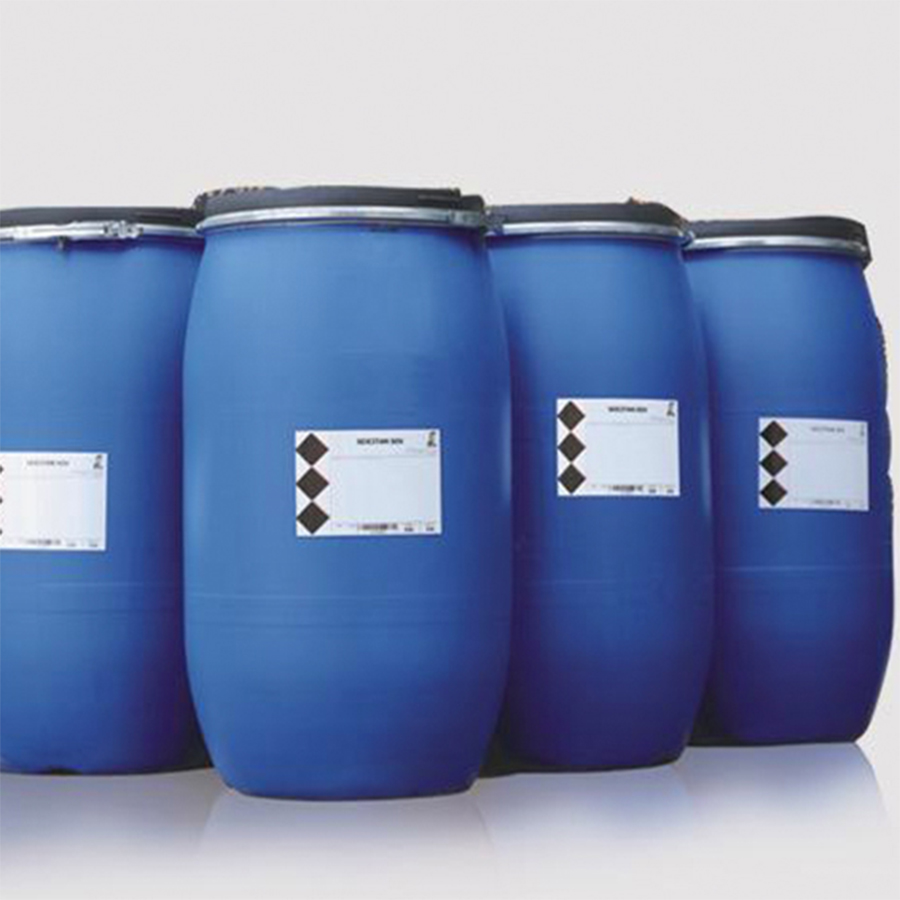Water-based polyurethane resin is the main component of water-based coatings, and pigments and fillers and related additives are added to the system to form water-based coatings. Water-based resin refers to a polymer system using water as a medium, and is divided into water-soluble resin, water-based resin and water-emulsion resin. Among them, the water-soluble resin is a polymer molecular chain through a hydrophilic group (or an appropriate water-based auxiliary agent) to achieve resin-level dispersion in a solution, and the resin is mostly transparent.
Waterborne resins and emulsion resins can be classified according to whether an emulsifier is added to the system, or the proportion of emulsifiers, and the hydrophilic groups in the polymer chain. In the literature, it can be judged based on the size of the particles dispersed in water during polymerization: the particle size of water-dispersible resin ranges from 0.001 to 0.1 μm and the particle size of the resin emulsion ≧ 0.1 μm; The diameter is ≦ 1 μm. The concepts of water-dispersible resin and water-emulsion resin are vague, and the boundaries are not clear.
Resin and polymer are basically not strictly distinguished in concept and can be replaced with each other. In the field of application, the range of application of polymers is wide, and it can include all polymer compounds, including resins, used in the polymerization of monomers such as plastics, elastomers, fibers, coatings and adhesives.
The application range of resin is relatively small, and the source can be divided into natural resin and synthetic resin. Synthetic resin refers to monomers with functional groups that are polymerized (addition polymerization or polycondensation) to make polymers with a higher glass transition temperature than polymers. They can be used in coatings, adhesives, fabric coating agents, leather polishes, Use of materials such as ink binders and potting materials.
Common water-based resins: water-based phenolic resins, water-based amino resins, water-based alkyd resins, water-based polyester resins, water-based acrylic resins, water-based epoxy resins, water-based polyurethanes, water-containing silicon, fluororesins, water-based photocurable resins, and water-based overrun Chemical resin, etc., mainly used in coatings, adhesives and other coating film-forming materials.
Water-based resins have the advantages of using water as a solvent, as follows: 1), a wide range of sources, simple and easy to obtain, low cost, no fire danger during processing, replacement of toxic volatile hazards of organic solvents such as benzene; 2), construction origin And tool cleaning is more convenient and economic cost is lower; 3), the construction process is simpler and more efficient, the water-based paint uses electrodeposition coating to automate the painting work, and the efficiency is higher than the commonly used spray, brush, shower and dip After the construction method is applied and the coated workpiece is treated with degreasing, rust removal and phosphating, the next operation does not need to be completely dried; 4) The quality of the coating film deposited by the electrodeposition method is good, without thick edges and sagging Such disadvantages, the edges and edges of the workpiece are basically the same thickness, and the slits and welding parts can be evenly painted.
Disadvantages of water-based resins: 1), high evaporation heat required for water evaporation, long drying time of paint film; 2), water-sensitive substrates, such as wood, paper and other industrial products, the application of water-based paint is limited; 3 ). Among water-based resins, carboxylic resins often need to be neutralized to slightly alkaline (pH 7.5-8.5). Under this alkaline condition, the ester group contained in the resin is easily hydrolyzed and degraded, which leads to the destruction of the resin system and the deterioration of the coating film performance. 4) The hydrophilic resin has a hydrophilic group and a low molecular weight, so it is resistant to acid and alkali and corrosion. Poor performance; 5). The coating process requires high surface treatment of the substrate.
Improvement and improvement of water-based resins: 1), in line with the “Four Es” principle (economy, environmental protection, high efficiency and excellent performance): environmental protection law and VOC (Volatile Organic Compound, volatile organic compounds) limit emissions. Water-based resins must focus on combining the goals of water-based and high-performance. They can neither follow the old path of “polluting first, then treating”, or the mistake of “focusing on environmental protection but light on performance”. 2) Improvement and improvement of water-based resin, development of high-performance, wide-use multi-functional hybrid products.
With the environmental policy and the public’s requirements for environmental protection, the development of water-based resins has been rapid, and related articles and patents have multiplied. The development trend of water-based resins covers the development of polymers with a single structure to multiple polymers, forming copolymers with more complex functions, such as: binary copolymerization (or composite), ternary copolymerization (or hybrid), and even quaternary or five Yuan copolymerization.
Binary copolymerization includes: acrylic-alkyd resin, acrylic-epoxy resin, acrylic-polyurethane resin, acrylic-silicone resin, acrylic-fluorine resin, etc .; terpolymerization includes: acrylic-epoxy-polyurethane, acrylic-ring Oxygen-silicon-containing, acrylic-epoxy-fluorine-containing, etc .; quaternary copolymerization includes: acrylic-epoxy-polyurethane-silicon-containing (fluorine-containing) resin.
The aqueous resin system formed by multi-component copolymerization, the monomer components are polymerized to form copolymerized (graft, interlocking) compounds, and even contain homopolymers containing certain monomers, the system is a very complex composite system. By changing the formula and processing technology of synthetic resins, synergistic effects are formed, strengths are avoided, and hybrid water-based resins with the best performance are obtained, which can meet the requirements for use in different fields, different environments and different construction conditions.
Huai’an Kaiyue Technology Development Co., Ltd. has been researching and producing water-based resin for more than ten years. It has water-based polyurethane adhesive layer-for water-based synthetic leather and water-based polyurethane fabric, which gives the product a super soft feel. Water-based polyurethane foam-for water bass and so on.
Follow the official website to learn more about water-based resins / water-based leather surface treatment agents.
